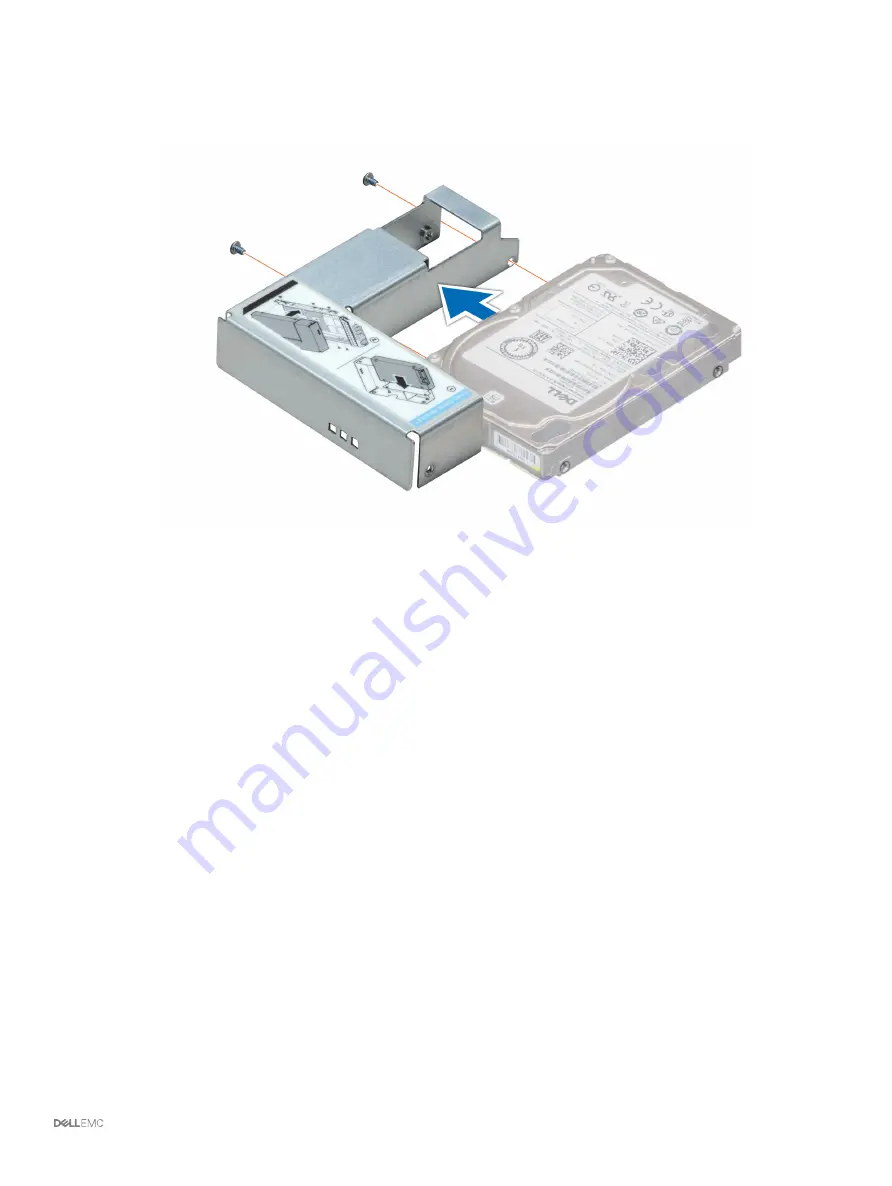
Steps
1
Align the screw holes on the 2.5 inch drive with the screw holes on the 3.5 inch drive adapter.
2
Using a Phillips #2 screwdriver, secure the 2.5 inch drive to the 3.5 inch drive adapter.
Figure 33. Installing a 2.5 inch drive into a 3.5 inch drive adapter
Removing a 3.5 inch drive adapter from a 3.5 inch drive carrier
Prerequisites
1
Follow the safety guidelines listed in
2
If installed,
3
Remove the 3.5 inch drive carrier from the system.
Steps
1
Using a Phillips #1 screwdriver, remove the screws from the rails on the drive carrier.
2
Lift the 3.5 inch drive adapter out of the 3.5 inch drive carrier.
Installing and removing system components
77
















































